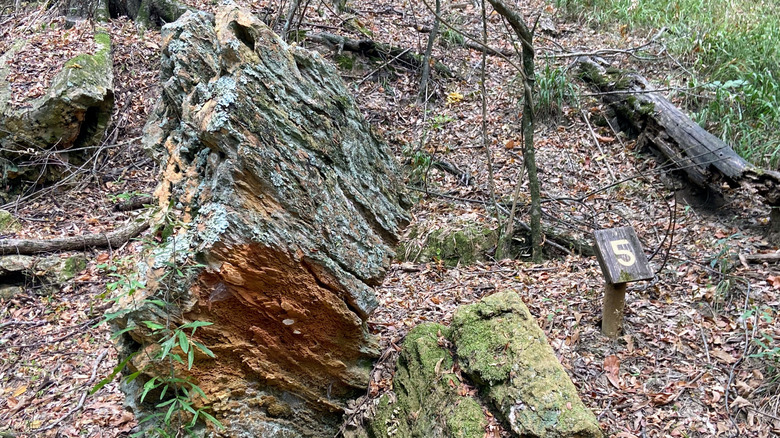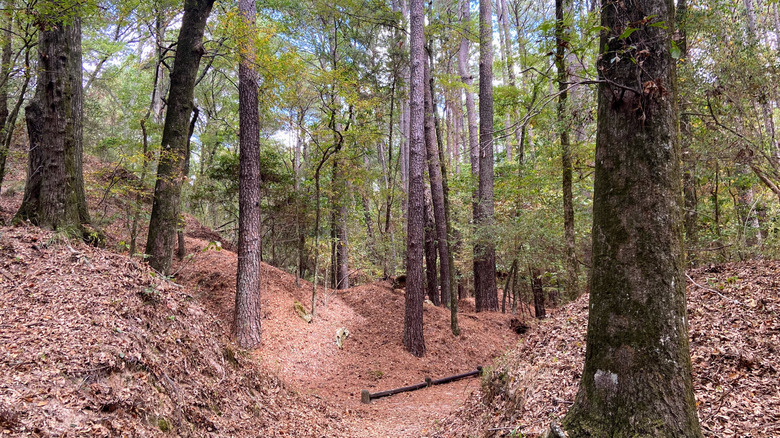One Of The Few Petrified Forests In America Has Preserved Ancient Trees And A Fascinating History
While Mississippi is home to a series of geological oddities, like the "Little Grand Canyon," many don't know that the Magnolia State has its very own petrified forest just 30 minutes from Jackson. The United States is filled with petrified forests (including America's oldest forest in Cairo, New York) that serve as time capsules of a continent in the making, which once looked nothing like its current form. After all, North America was divided by a shallow inland sea, separating two land masses where deserts weren't yet deserts and rivers once flowed that no longer exist, such as the one that created the Mississippi Petrified Forest 36 million years ago in Flora.
This petrified forest was formed when a river that once flowed in central Mississippi (no, not that Mississippi River) knocked over trees and carried them downstream. A logjam stopped the trunks, and they got buried under sand and silt, where they stayed for millions of years until their discovery in the 1850s. People started finding these fossilized trees, stealing them until the Schabilion family bought the land and decided to turn it into a protected natural area in 1962.
The petrified forest became a landmark in 1965, and thanks to their work, visitors can now explore this ancient forest via a lovely, shaded trail or even by partaking in outdoor activities like camping in this verdant setting. These fallen petrified logs are in the middle of a living forest, creating a unique location where time both stops and moves at once. After all, while the oldest living trees on earth can reach thousands of years in age, petrified trees are millions of years old, remarkable and fascinating testaments to a long-lost world.
The ancient giants of the Mississippi Petrified Forest
The U.S. is home to a handful of petrified forests, which are typically lesser-known destinations. Perhaps what's even less known than the sites themselves is how, exactly, petrified wood comes to be. After all, if an ancient giant falls in the forest millions of years ago and humans don't exist yet to hear it, does it make a sound?
Generally, fossils are made when an organism is buried underneath something that prevents decay, such as mud, lava, or ash. Afterwards, water seeps into the organism, and its minerals crystallize inside, transforming it into a fossil as tissues wear away. This is what gives petrified wood its crystal or gem-like quality, which you can see firsthand in the Mississippi Petrified Forest, whose trees mainly absorbed the mineral silica that turned them into quartz.
These trees were initially buried under mud when they got caught in a powerful flood and were later covered by a thick layer of glacial dust several feet deep. There they stayed and solidified over millions of years until the erosion process began, as wind and rain exposed these long-buried treasures. In fact, they were so well-preserved that the tree rings are still on some of them, a remarkable remnant of a time when this area was a tropical landscape filled with rivers and swamps surrounded by large conifer and hardwood trees like maples. These weren't little saplings either; some of the trees were believed to be 100-feet tall and 1,000 years old when they fell. So, this small petrified forest — one of two in the Eastern U.S. with a gorgeous hiking trail that only stretches for about six blocks – is actually quite big in its scope and historical significance, making it a must-see site for anyone looking for a unique experience of Mississippi's landscape.

